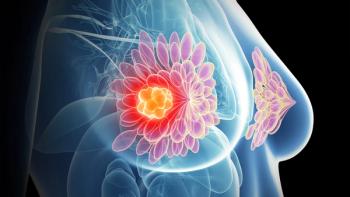
Head and Neck Cancer Survivors Need More Support, Including Physical Therapy
Coping with the aftermath of cancer and cancer treatment can be especially difficult for survivors of head and neck cancer, according to Ann Marie Flores, PT, PhD, CLT.
Ann Marie Flores, PT, PhD, CLT
Coping with the aftermath of cancer and cancer treatment can be especially difficult for survivors of head and neck cancer, according to Ann Marie Flores, PT, PhD, CLT.
Flores, assistant professor, Department of Physical Therapy, Movement & Rehabilitation Science, Bouvé College of Health Sciences, Northeastern University, conducted a pre-pilot study looking at early physical therapy education for this patient population.
Oncology Nursing News interviewed Flores about her poster, which she presented at the 8th Biennial Cancer Survivorship Research Conference in Washington, DC.
Could you first give me some background about this study? How did it come to be?
It was a spinoff of some studies that I began in breast cancer. I conducted a literature review of rehab needs of breast cancer survivors about 10 years ago and found that there was very little out there. Then, when I started a rehab oncology program at a previous institution, the patient population that were referred to the program tended to not be breast cancer patients, because they physically and functionally tend to do well in aggregate. Most of my patients referred were those with head and neck cancer. I went through the same process to look through literature critically to figure out what exists in terms of physical therapy and rehabilitation-based approaches. I've updated this over a long period of time and this poster is a systematic review of the quality of evidence. I combined this literature and data review with talking to a focus group of cancer survivors.
What did you find?
I asked the focus group if they needed more information and the answer was "Yes!" over and over again. The majority of comments I heard were exactly about physical therapy, self-care and efficacy—things we specialize in. They were also adamant about oral health and dental care, understanding salivary function, tongue motion, muscles, and more. We also heard a lot about emotional and social support. So many of these survivors said they felt they were losing their mind because no one around them understood what they were going through after treatment.
It was very interesting to see the concordance of the systematic review results with our focus groups.
What is it about this population that you think creates such a need for information?
Head and neck cancer survivors make up about 4% of all cancer survivors. What many of these patients have are multimodality therapies, highly disfiguring surgeries, surgeries that contribute to high rates of disability. Many patients also get chemotherapy and radiation. These survivors can have impairments that can compromise key functions of life—breathing, eating, and speaking.
Can these patients get the services they need? Where?
They should be able to, yes. I am a long-standing member of the American Physical Therapy Association and we have a task force that specializes in head and neck studies. We've published 4 studies looking at measuring physical therapy—related impairments that we can rehabilitate, such as shoulder dysfunction, trismus, and lymphedema. With trismus, patients can't open their mouths. Many patients with head and neck cancer have either had muscle tissue removed or have highly scarred jaw muscles. And with lymphedema, you can get that in any part of your body, including the head and neck. Many patients will have lymph fluid collect in the under part of their neck.
For a patient who has finished treatment and facing some of these issues, where should he/she go for support?
As a patient, I'd tell my doctor that I need a referral to a physical therapist. In fact, the next steps following on our research will be to pilot test our patient education materials to determine their clinical feasibility, acceptability, and impact on PT outcomes. We want to ensure that these materials are patient-centered and relevant across the survivorship trajectory.
Newsletter
Knowledge is power. Don’t miss the most recent breakthroughs in cancer care.


















































































